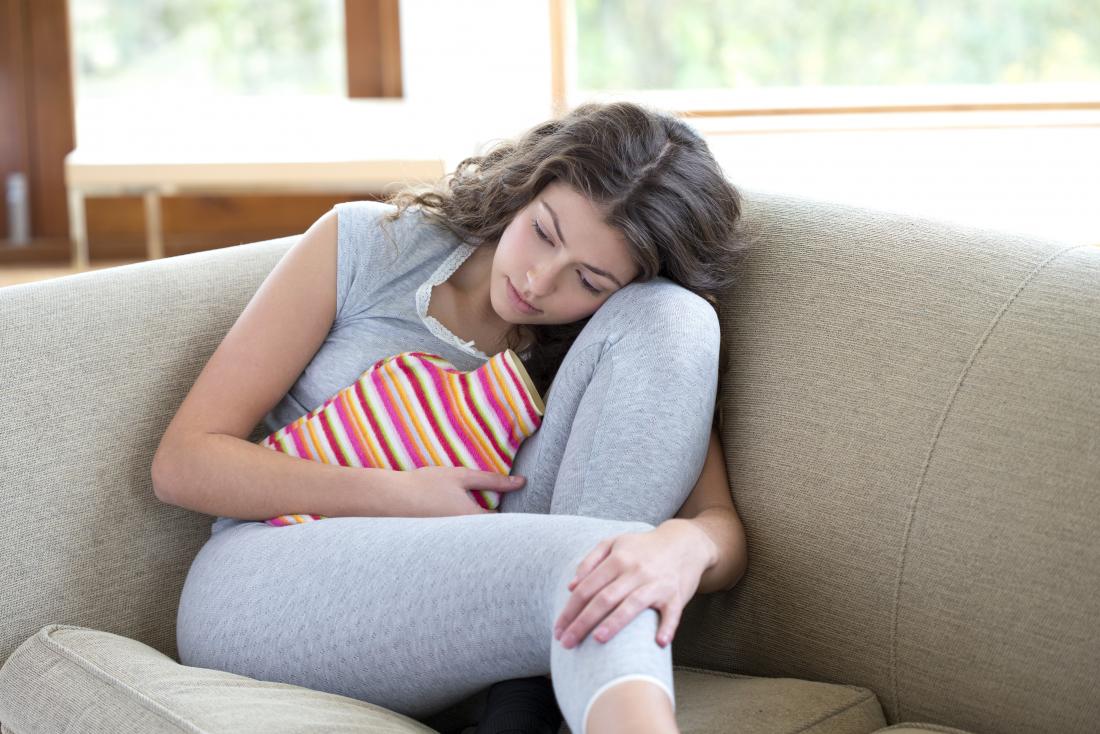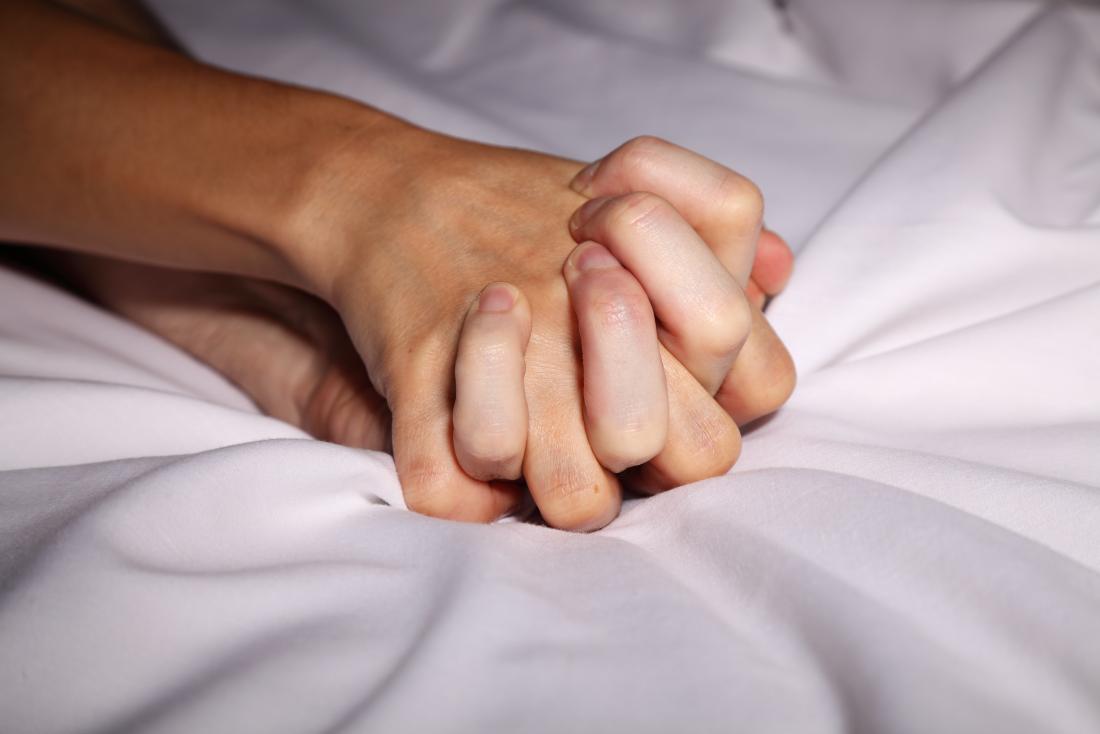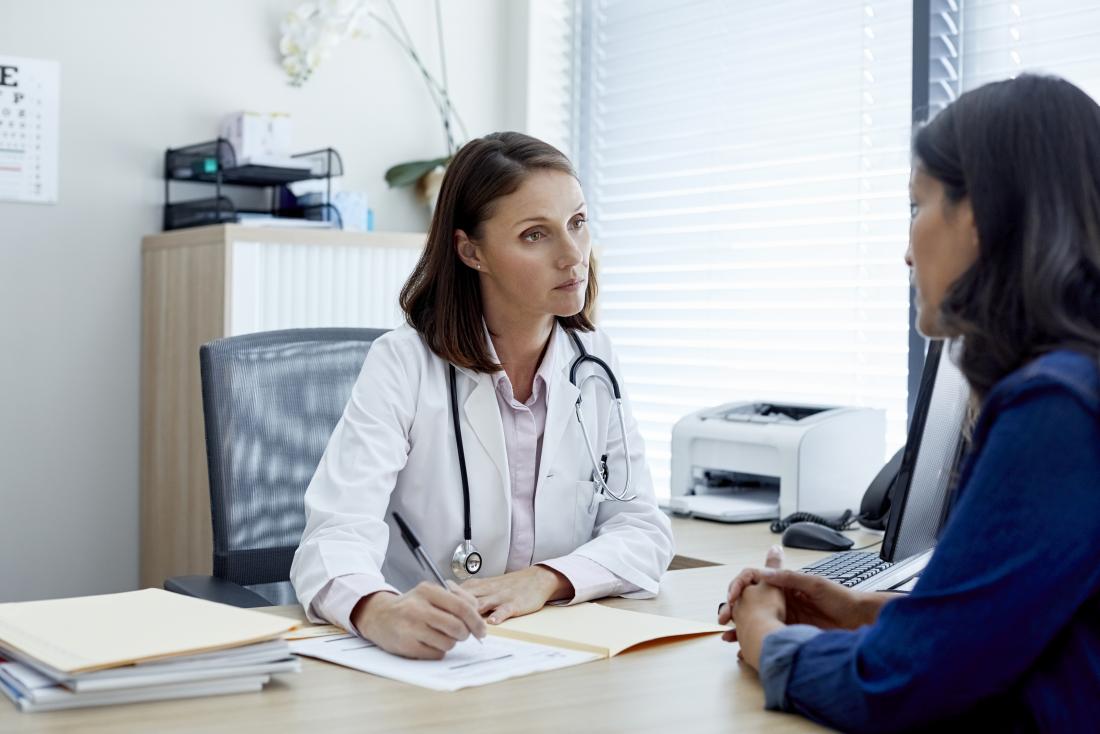Sometimes, pelvic pain is an indicator of an infection or issue with the reproductive system or other organs in the area. When this is the case, a woman may need to see a doctor.
In this article, we look at 15 possible causes of pelvic pain in women.
Causes
1. Menstrual pain and cramps

Menstrual cramping is a common cause of pelvic pain.
Menstrual pain and cramping are a common cause of pelvic pain in women.
Of all menstrual disorders, women most commonly report experiencing pain, say the American College of Obstetricians and Gynecologists (ACOG).
Over half of women who menstruate will experience some pain for at least 1–2 days each cycle.
Menstrual cramping will typically occur immediately before a woman starts her period, as the uterus contracts and sheds its lining. The pain may feel similar to a muscle spasm or a jabbing pain.
Using a warm heat pad may relieve the sensation. Over-the-counter medications, such as ibuprofen (Advil) and naproxen (Aleve), may also help relieve pain.
In cases of severe pain from menstruation, doctors can recommend other medications.
2. Ovulation
If a woman feels a painful sensation on one side of her pelvis in the middle of her menstrual cycle, she may be experiencing mittelschmerz. Doctors use this German word to describe painful ovulation.
When a woman ovulates, the ovaries release an egg, along with some other fluid. The egg will then travel down the fallopian tube and into the uterus. The fluid released by the ovary can spread within the pelvic area, sometimes, causing irritation in the pelvis and leading to pain.
The discomfort may last for minutes or hours, and it may switch sides of the body, depending on which ovary released the egg. The pain is temporary and requires no specific treatment.
3. Interstitial cystitis
It is also possible for a woman to experience ongoing bladder inflammation that has no known cause. The medical term for this is interstitial cystitis, and doctors are currently unsure why it happens.
Interstitial cystitis can cause pelvic pain and symptoms such as painful urination, needing to urinate frequently, and pain during sex. Treatment often involves managing symptoms as best as possible.
4. Cystitis or urinary tract infections
Cystitis refers to inflammation in the bladder due to a bacterial infection. This happens because vaginal, rectal, or skin bacteria can enter the urethra and make their way to the bladder.
A urinary tract infection (UTI) is one that can occur anywhere in the system, while cystitis occurs only in the bladder.
Both conditions are common in women. These infections will sometimes clear up on their own, but a short course of antibiotics will typically treat cystitis and other UTIs.
5. Sexually transmitted infections

A sexually transmitted infection can cause pelvic pain.
Pelvic pain may indicate the presence of a sexually transmitted infection (STI) such as gonorrhea or chlamydia. STIs occur in people who are sexually active.
Chlamydia affects around 2.86 million people each year in the United States, according to the Centers for Disease Control and Prevention (CDC).
The CDC also estimate that gonorrhea affects 820,000 people every year.
Along with pelvic pain, other symptoms of STIs may include painful urination, bleeding between periods, and changes in vaginal discharge.
Anyone experiencing these changes should see their doctor who will be able to diagnose an STI and prescribe treatment, usually including antibiotics. It is also critical to inform sexual partners about the infection to prevent it from spreading.
6. Pelvic inflammatory disease
Pelvic inflammatory disease (PID) is an infection in the womb that can damage the surrounding tissue. PID can arise if bacteria from the vagina or cervix enter the womb and take hold.
It is usually a complication of an STI such as gonorrhea or chlamydia. Along with pelvic pain, women may experience other symptoms, including abnormal vaginal discharge and bleeding.
PID increases a woman’s risk of infertility. The CDC note that 1 in 8 women who have had PID also have trouble becoming pregnant.
Treatment typically involves taking antibiotics to treat the bacterial infection. However, they cannot treat scarring, which is why early treatment is crucial.
7. Endometriosis
Endometriosis occurs when endometrium, or tissue that lines the inside of the uterus, grows outside of the womb.
Endometriosis may be a source of chronic, long-lasting pelvic pain in some women. When a person’s period begins, this tissue outside of the uterus responds to hormonal changes, which may cause bleeding and inflammation in the pelvis.
Some people may experience mild to severe pain. Endometriosis may make it difficult for some women to become pregnant. Doctors may recommend various treatments, depending on symptom severity.
8. Irritable bowel syndrome
Irritable bowel syndrome (IBS) is a gut disorder that causes pain and symptoms, including constipation, diarrhea, and bloating.
The symptoms of IBS tend to flare up and go away over time, especially after a bowel movement. There is no cure for IBS, so treatment focuses on managing symptoms through changes in diet, stress levels, and medications.
9. Appendicitis
Appendicitis is inflammation in the appendix, which is a small organ in the lower-right abdomen. An infection causes this condition, and, although it is common, it can be severe.
Anyone experiencing a sharp pain in their lower-right abdomen, along with other symptoms such as vomiting and fever, should seek immediate medical care, as this may be a sign of appendicitis.
10. Urinary stones
Stones in the urinary tract consist of salts and minerals, such as calcium, that the body has trouble getting rid of in the urine.
These minerals can build up and form crystals in the bladder or kidneys that often cause pain in the pelvis or lower back. Stones may also cause the urine to change color, often turning it pink or reddish with blood.
Some stones do not require treatment, but passing them can be painful. At other times, a doctor may recommend medications to break up stones or surgery to remove them.
11. Ectopic pregnancy
An ectopic pregnancy occurs when an embryo implants itself anywhere outside of the uterus and starts growing.
A woman may feel very sharp pain, and cramps in her pelvis, which are usually focused on one side. Other symptoms include nausea, vaginal bleeding, and dizziness.
Anyone who suspects that they have an ectopic pregnancy should seek immediate medical care, as this is a life-threatening condition.
12. Pelvic adhesions
An adhesion is scar tissue that occurs inside the body and connects two tissues that should not be connected. This may result in pain, as the body struggles to adapt to the adhesion
The scar tissue could form due to an old infection, endometriosis, or other issues in the area. Pelvic adhesions may lead to chronic pelvic pain in some women, and they may cause other symptoms, depending on where the scar tissue appears.
A doctor may recommend some minimally invasive surgeries to help reduce adhesions and relieve symptoms.
13. Ovarian cysts
Ovarian cysts occur when the ovaries fail to release an egg. The follicle holding the egg may not open completely to release the egg, or it may become clogged with fluid.
When this happens, a growth called a cyst forms in the area, which may cause bloating, pressure, or pelvic pain on the side of the body with the cyst.
As the ACOG explain, most cysts are noncancerous. In many cases, ovarian cysts go away on their own. In some cases, a cyst may bleed or burst, which can cause sharp, severe pain in the pelvis and may require medical treatment.
Doctors can identify ovarian cysts using ultrasound, and they may recommend treatments that range from watchful waiting to surgery.
14. Uterine fibroids
Fibroids are lumps of muscle and fibrous tissue within the uterus. While they are noncancerous and do not tend to cause symptoms, these growths can be a source of pain. They may cause discomfort in the pelvis or lower back or pain during sex.
Fibroids may also cause excessive bleeding or cramping during menstruation.
Some fibroids do not require treatment. If a woman finds her symptoms difficult to manage, doctors may recommend one of many treatments, including medications, noninvasive procedures, or surgery.
15. Tumor
In rare cases, a malignant growth in the reproductive system, urinary tract, or gastrointestinal system may be the reason for pain in the pelvis. The tumor may also cause other symptoms, depending on where it appears.
Doctors will need to perform a thorough evaluation, often using blood and imaging tests, to identify a tumor. Once they have diagnosed the issue, they will recommend possible treatments.
When to see a doctor

If a person has new pelvic pain then they should visit a doctor.
For many causes of pelvic pain, it is not necessary to seek medical care.
However, there are some occasions when the woman should see a doctor.
Any new, severe pain requires evaluation. For example, a person who suspects that an infection is causing their pelvic pain should visit a doctor. While some infections clear up on their own, the chance of complications is often not worth the risk of waiting.
Anyone with vaginal bleeding they do not expect, and severe pain should also consult a doctor promptly.
If a person has a known condition and experiences sudden changes in pain, such as sharp twists or sudden severe pain, they should seek medical attention, as this could be a sign of a serious change in the condition.
Other symptoms that appear alongside pelvic pain, such as fever, nausea, and vomiting, are also signs that someone should see a doctor. They will make a thorough evaluation and help devise a suitable treatment plan.
Summary
For the most part, pelvic pain in women appears as a result of a common issue such as menstrual cramping or painful ovulation. However, if a person notices signs that a more serious underlying problem is causing the pain, they should consider seeing a doctor.
A thorough diagnosis is essential in every case so that people can avoid potentially serious complications and find the best treatment.

